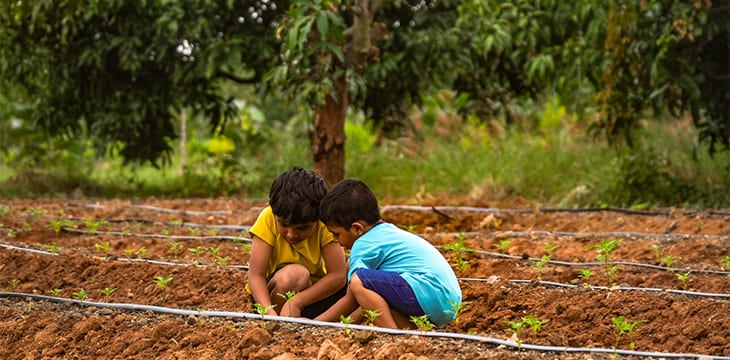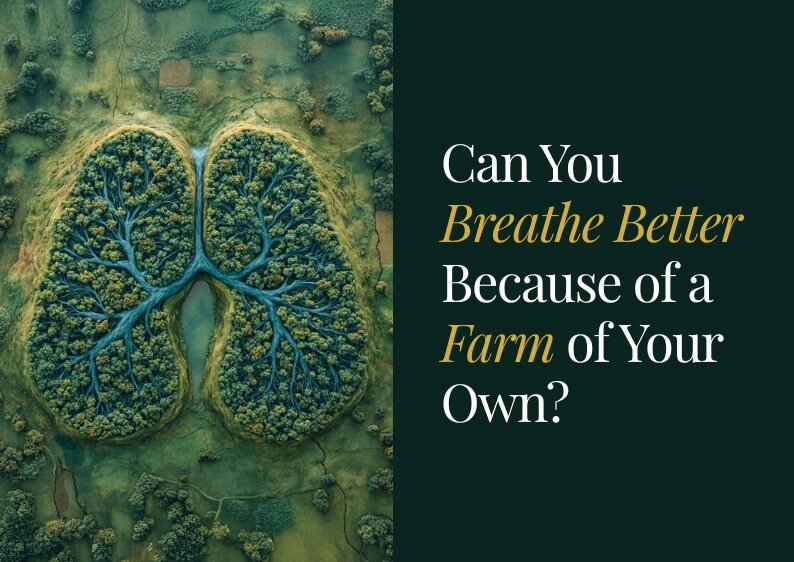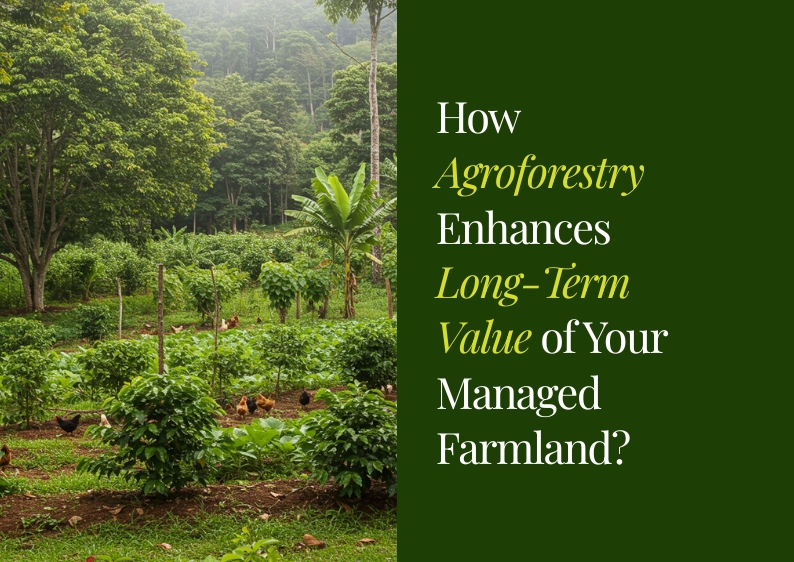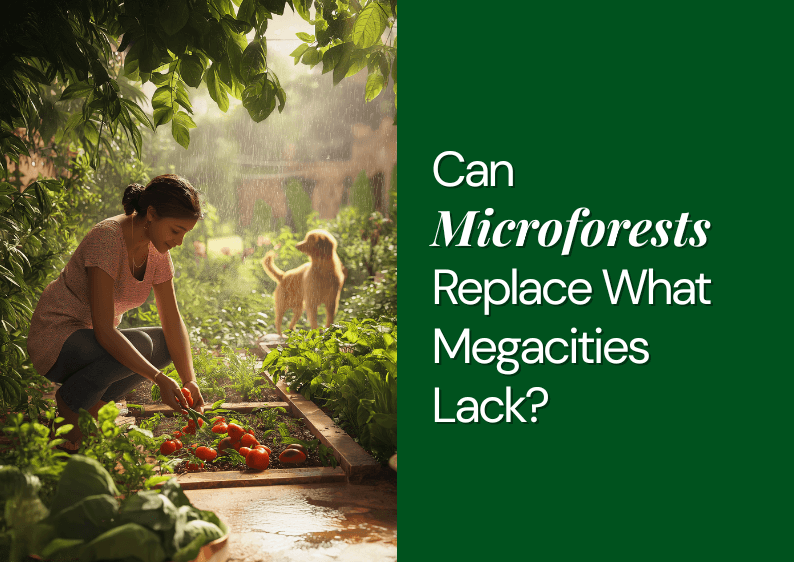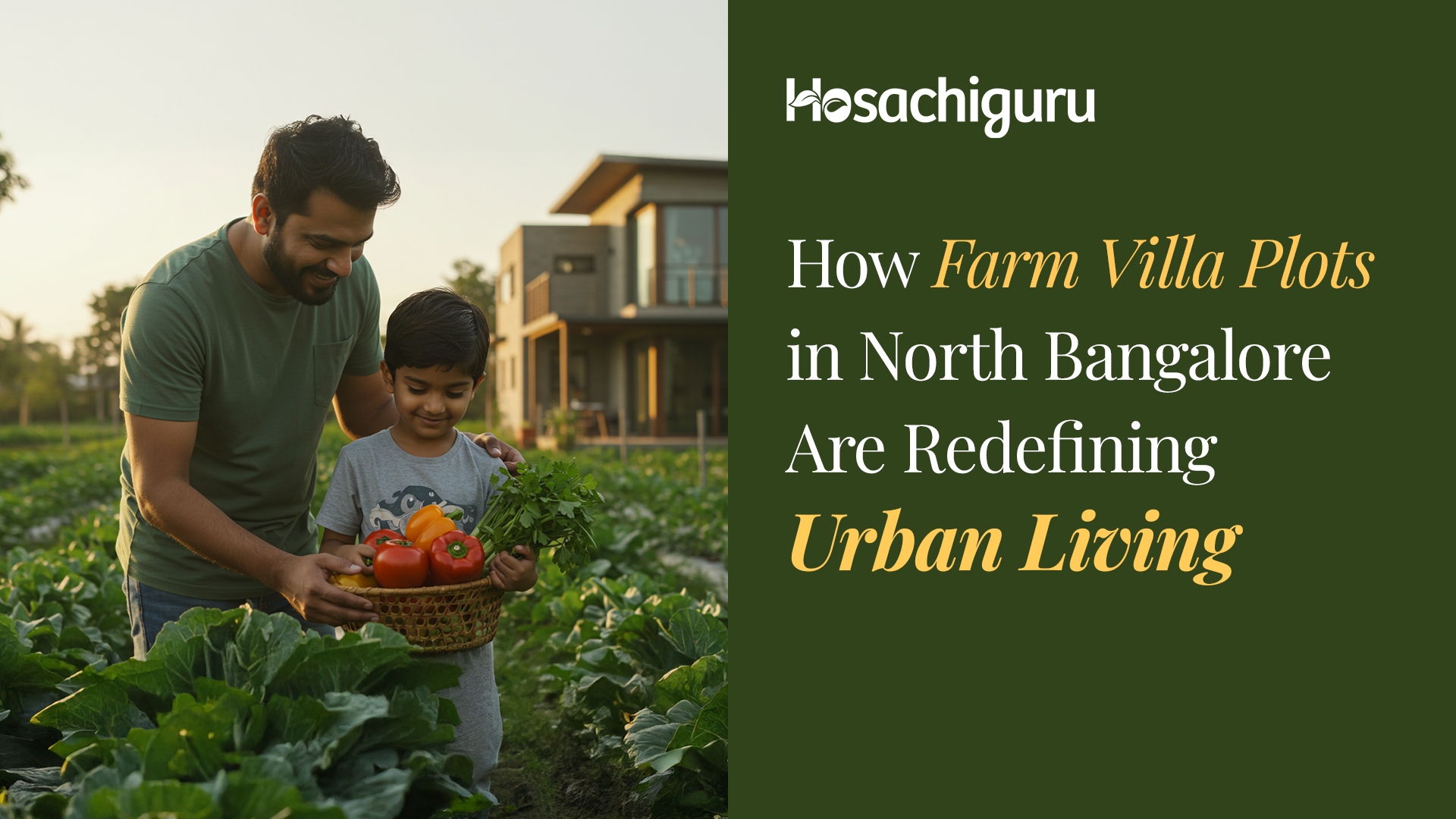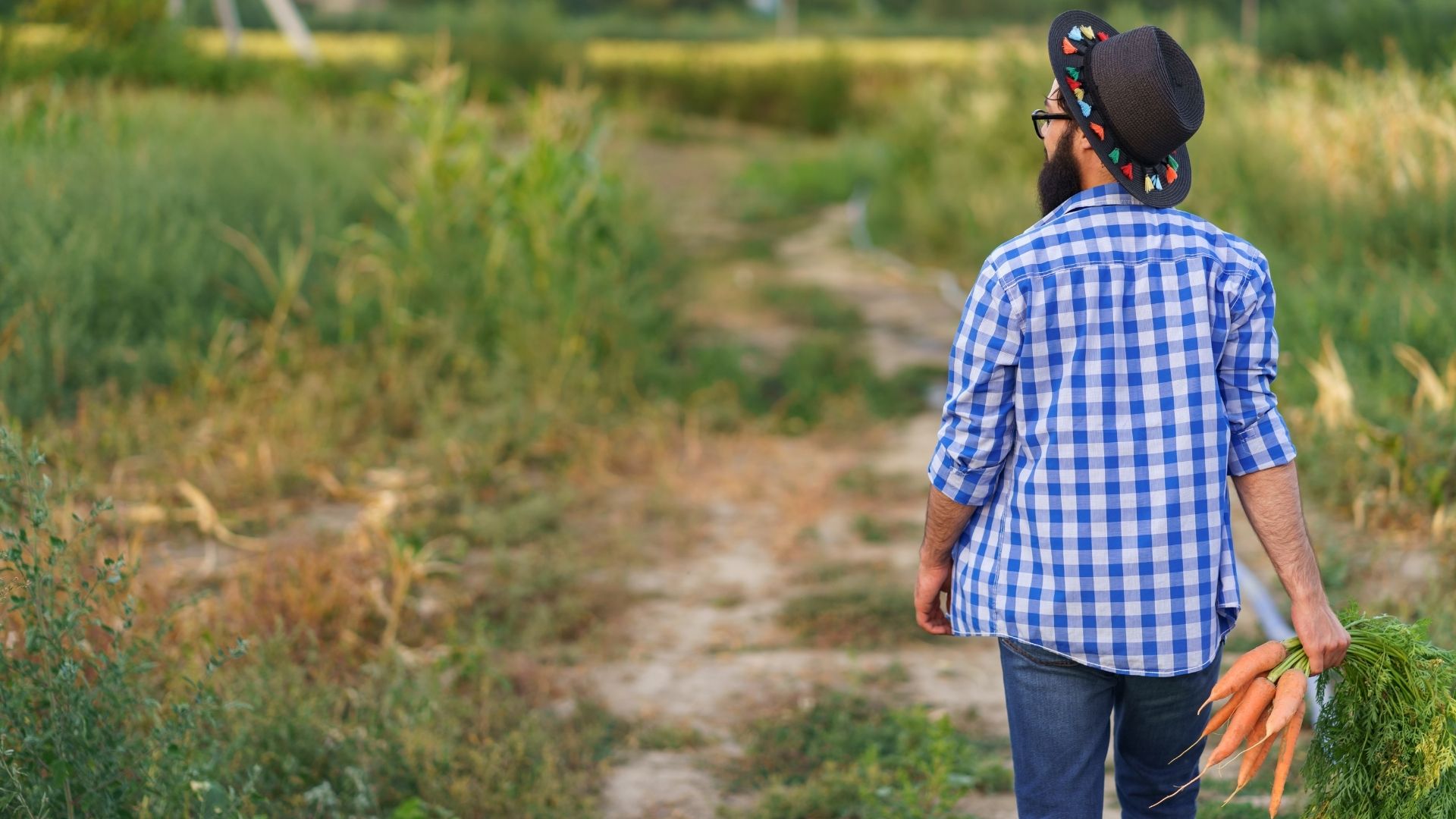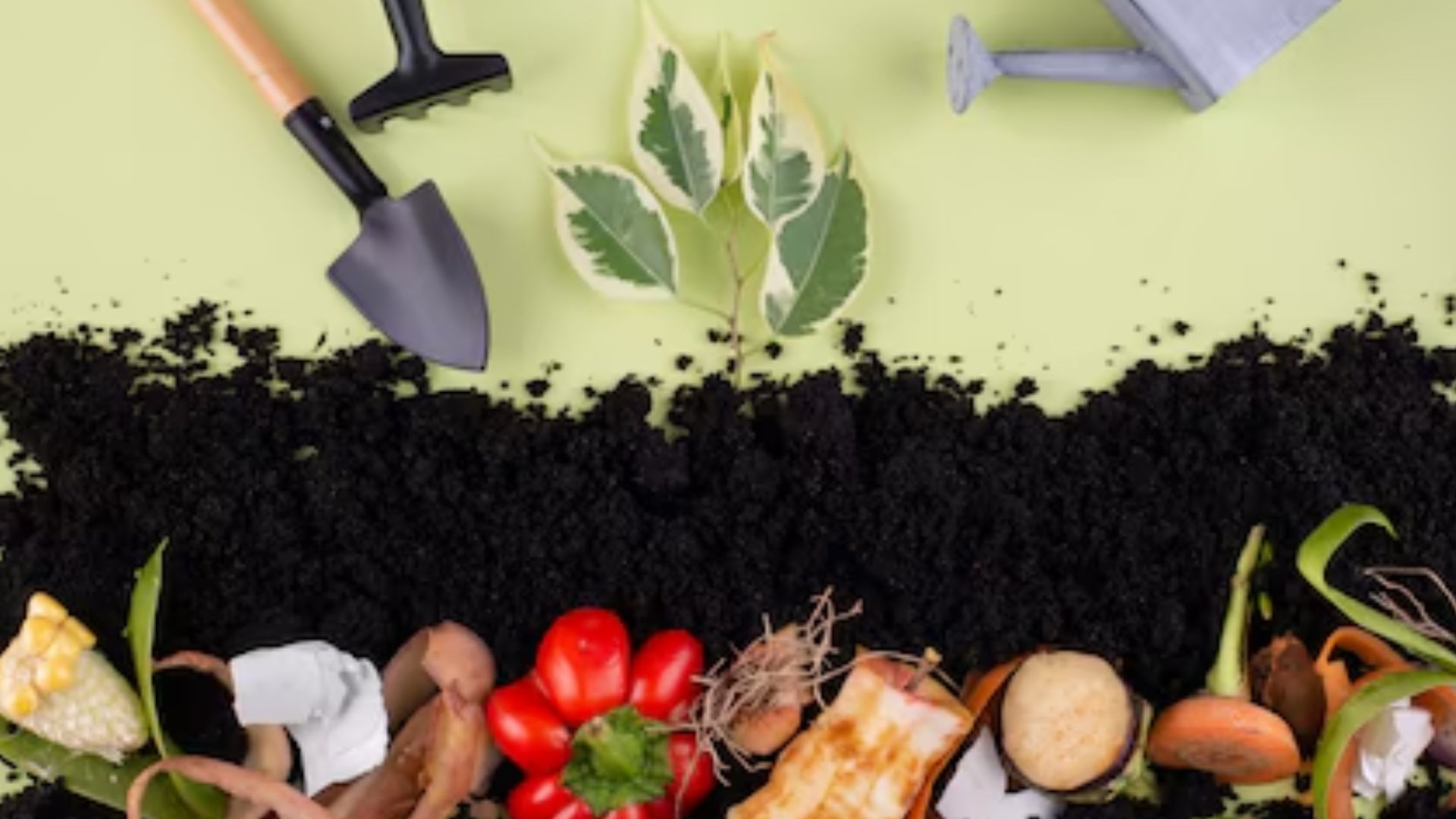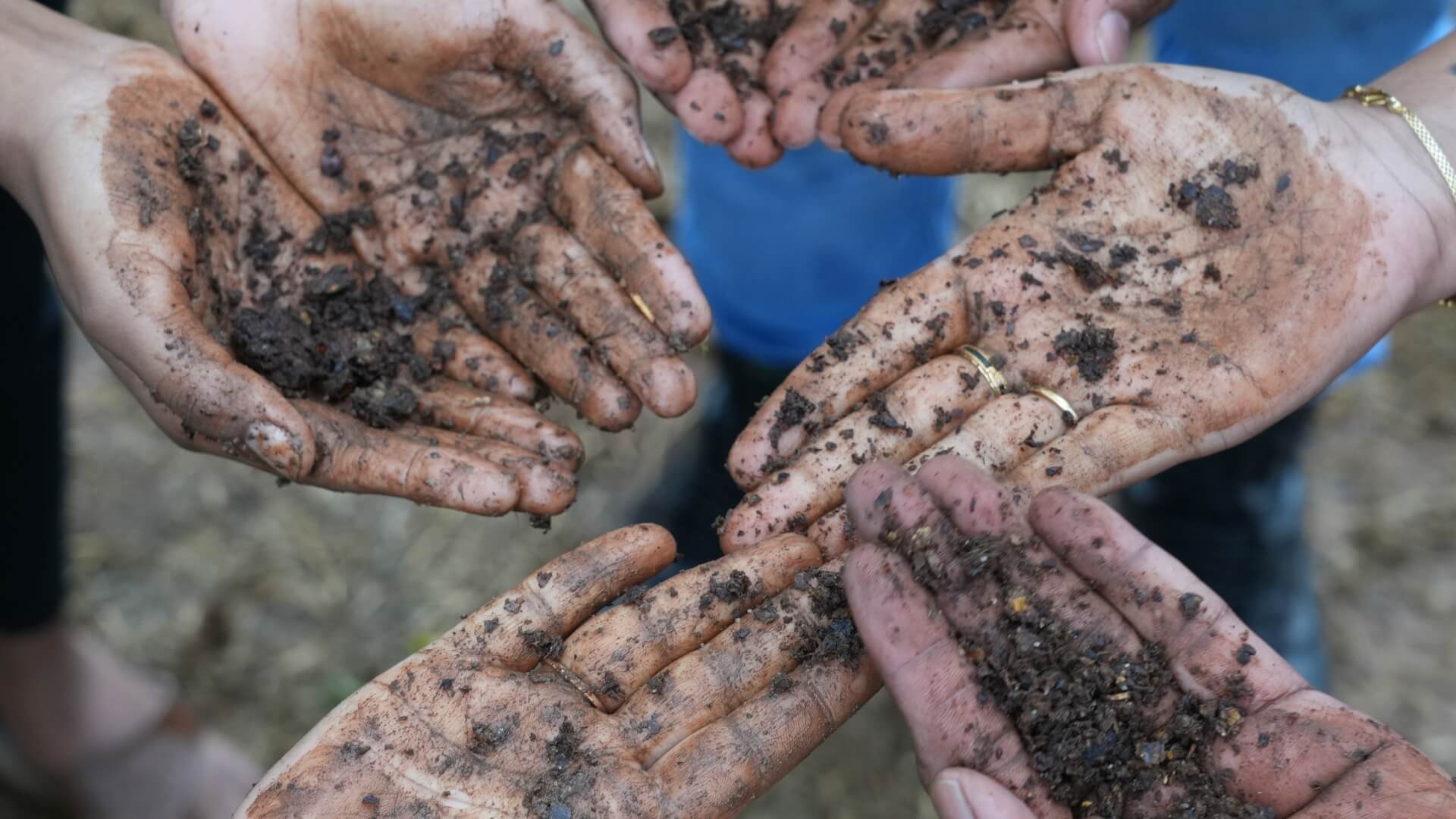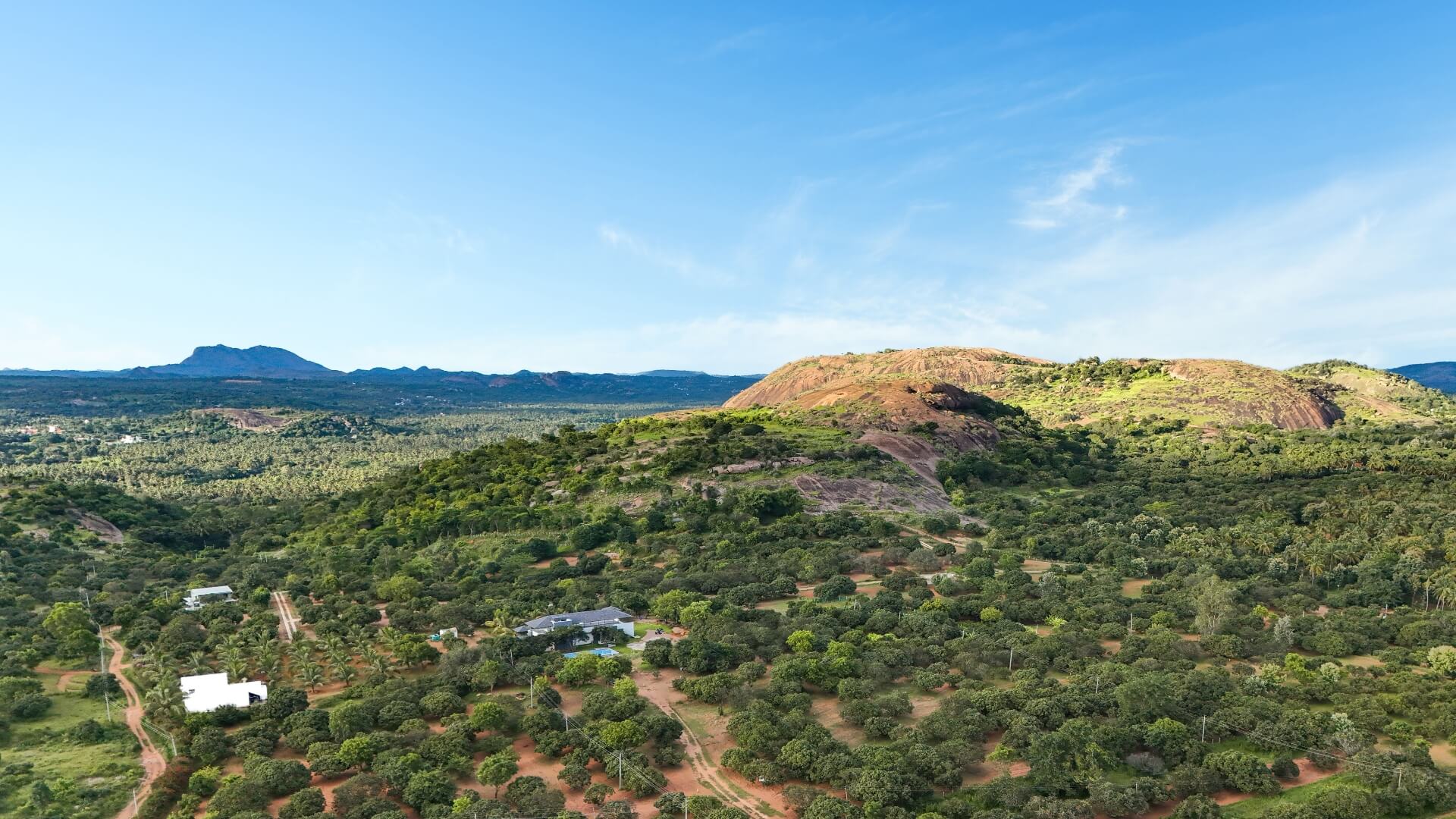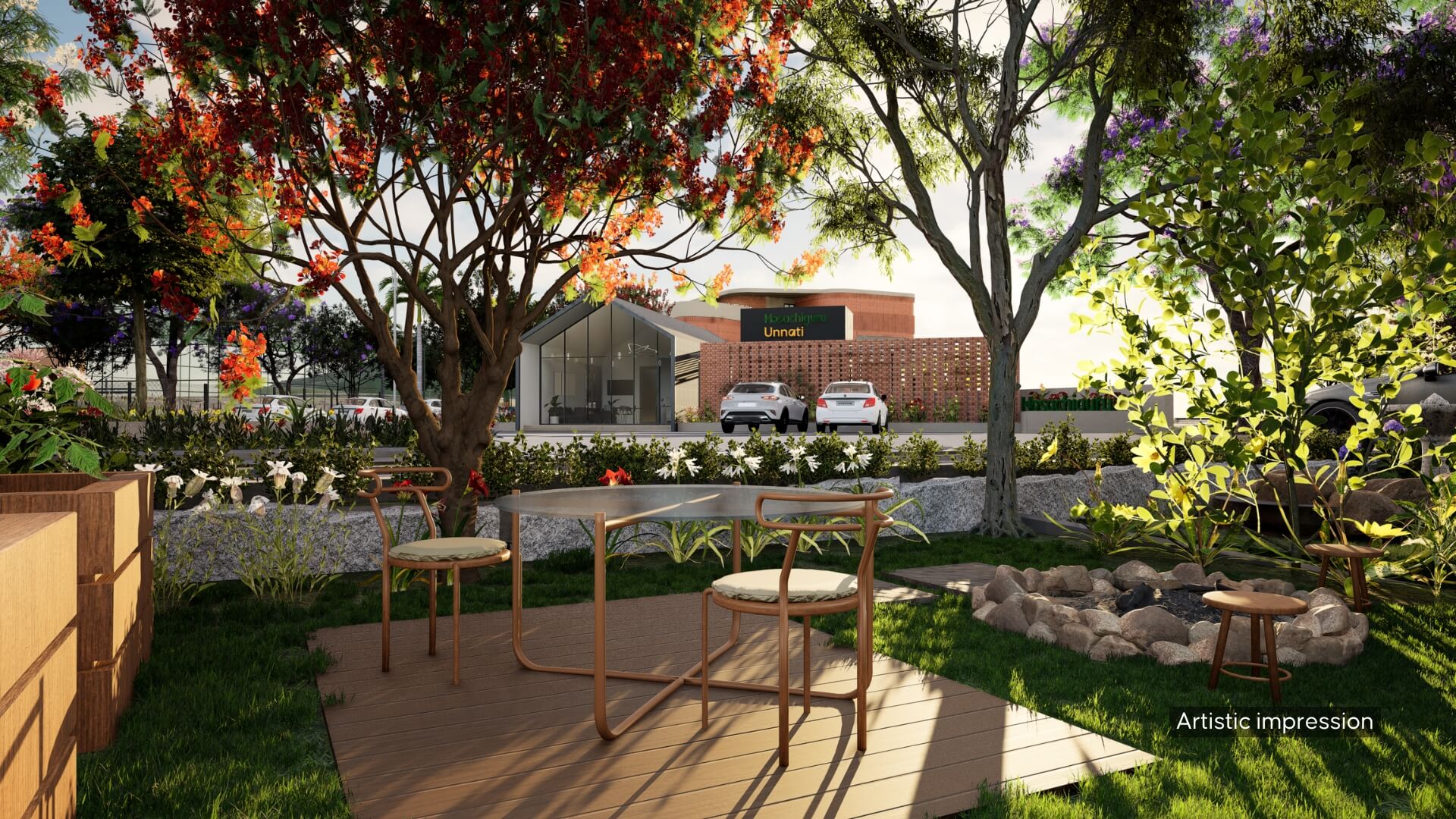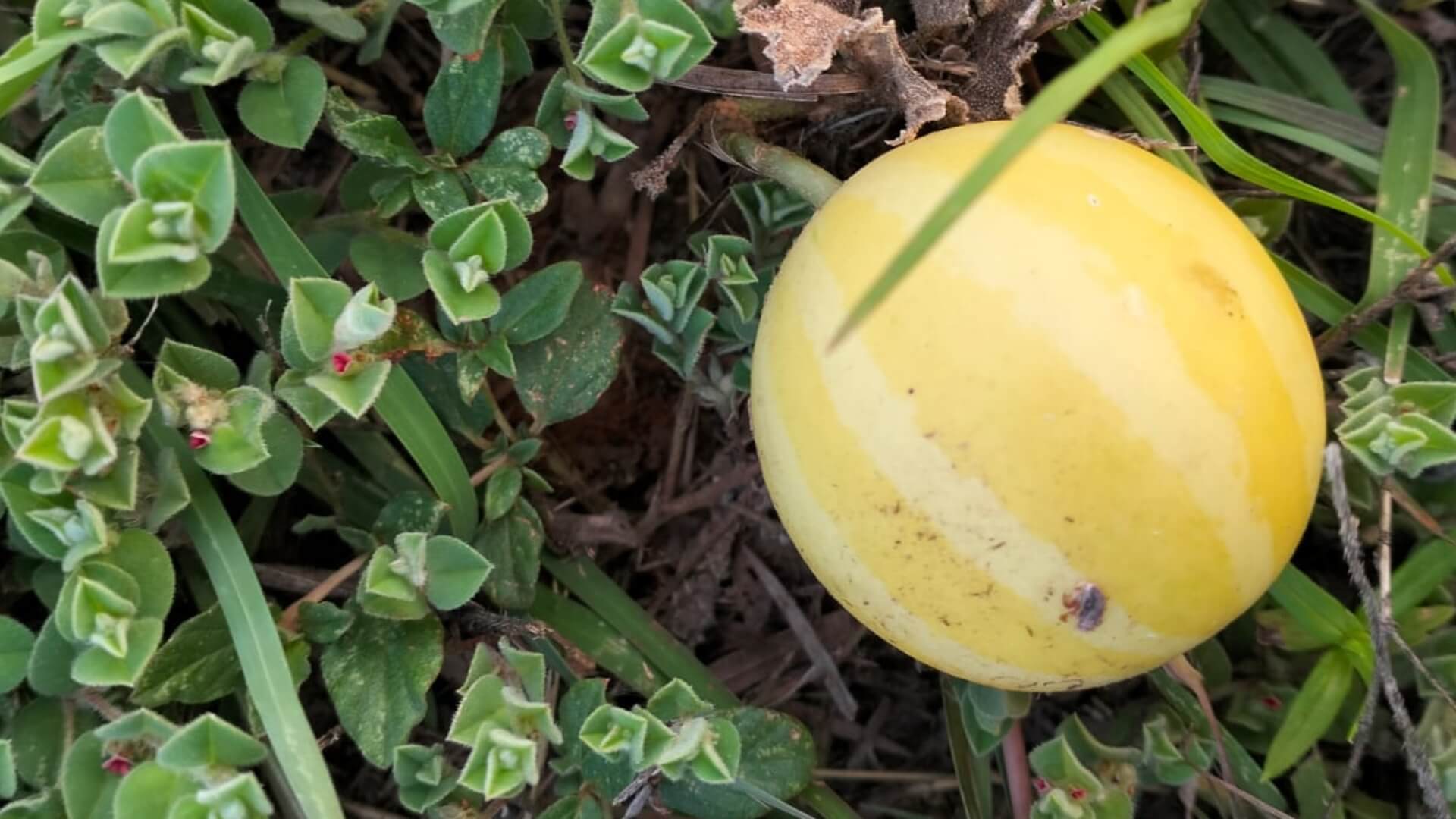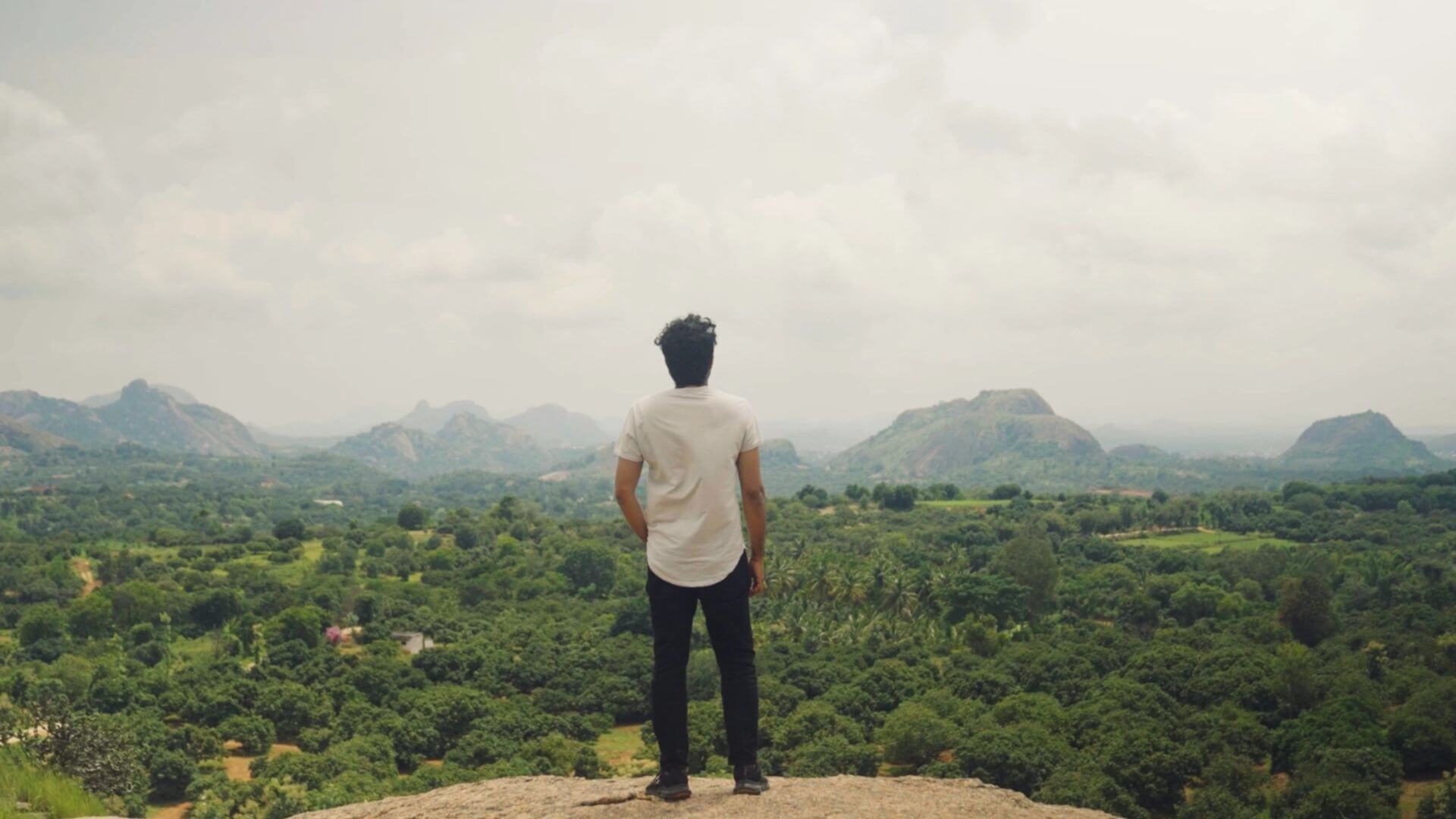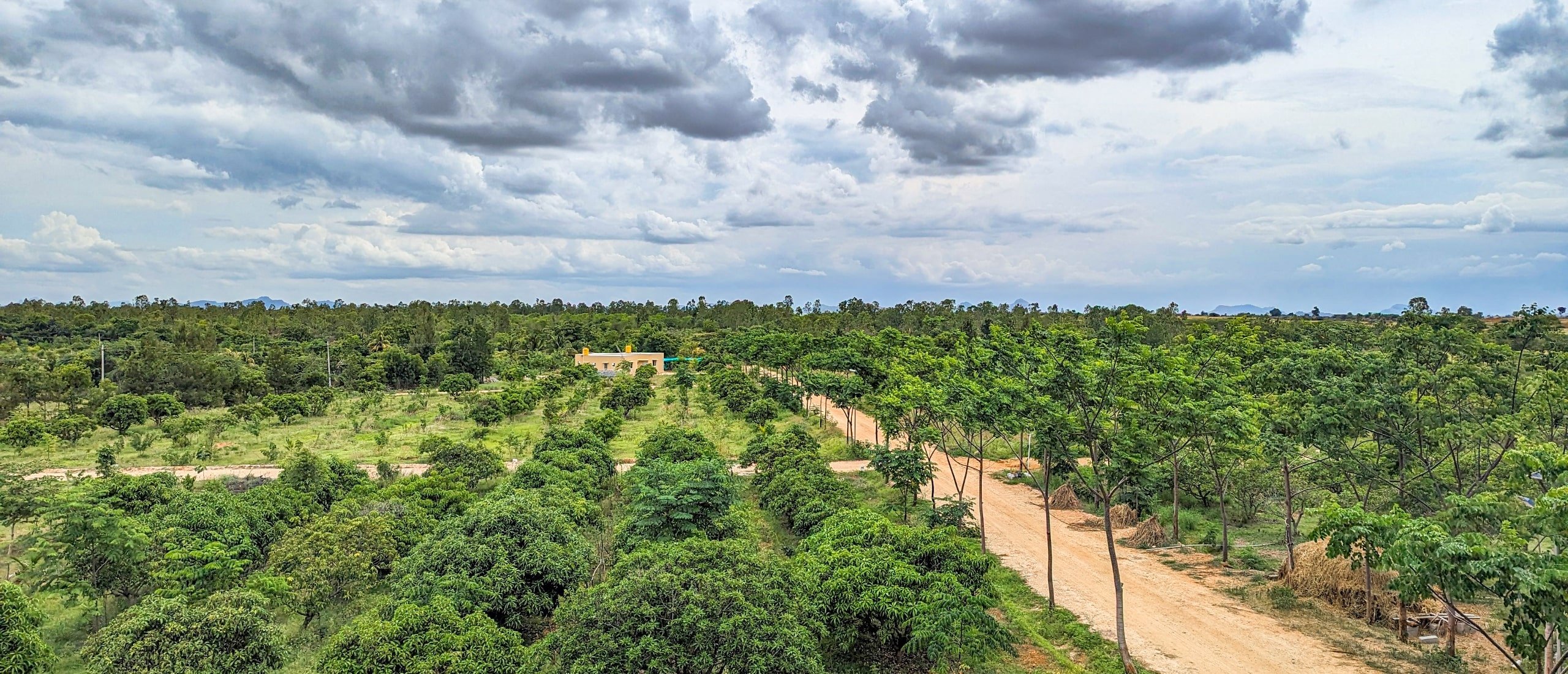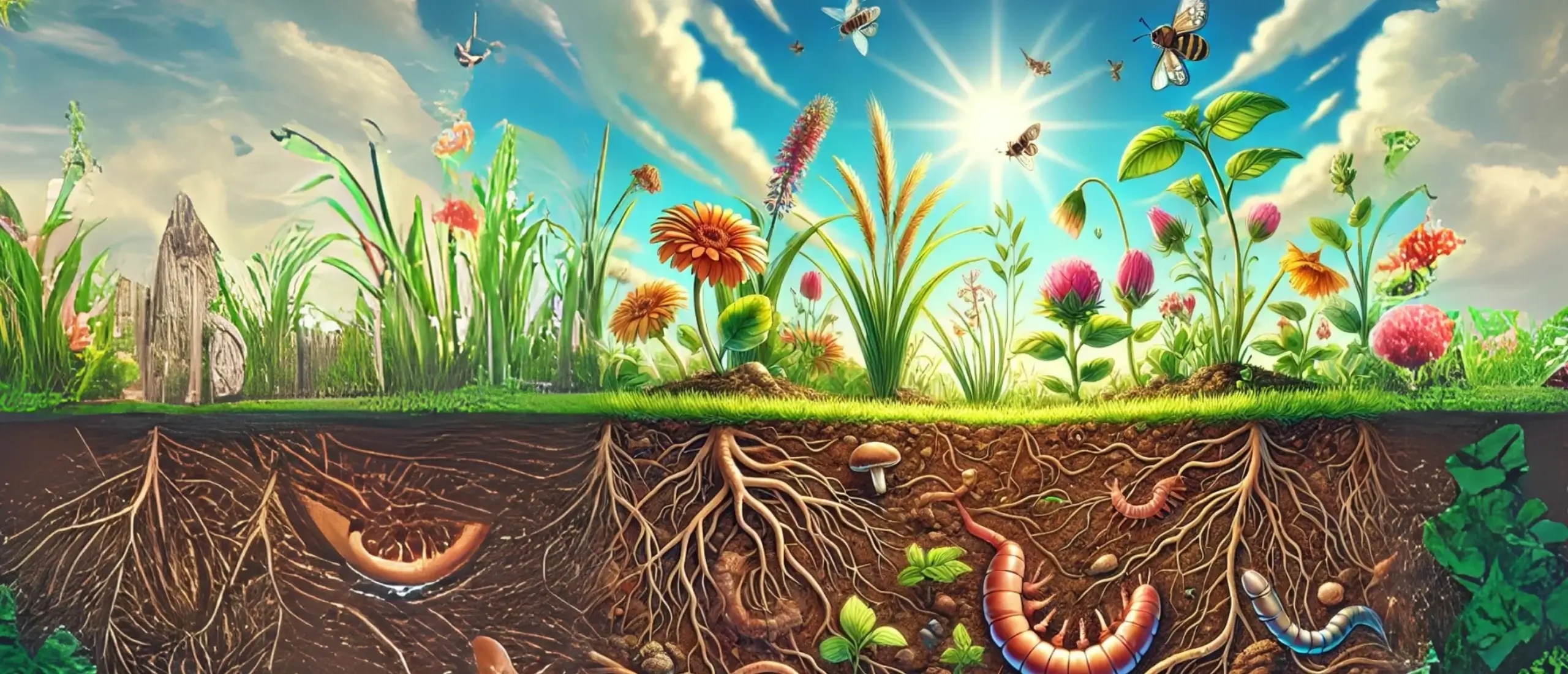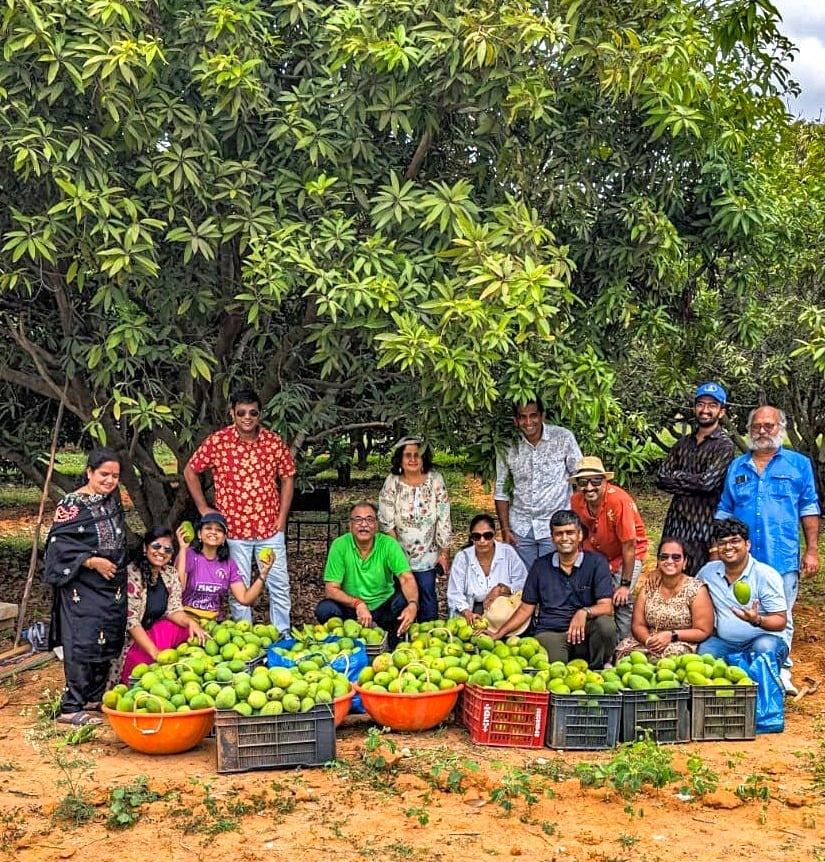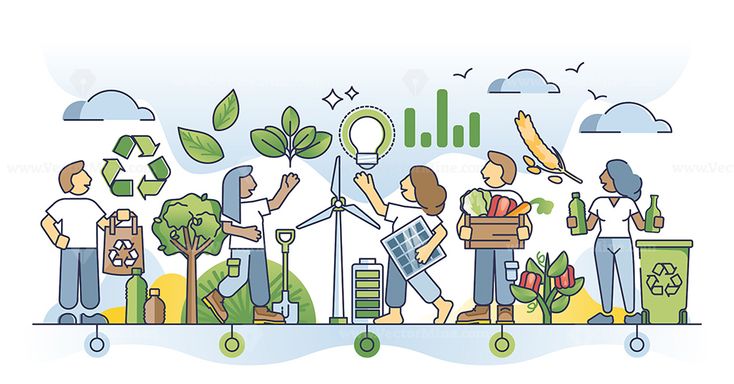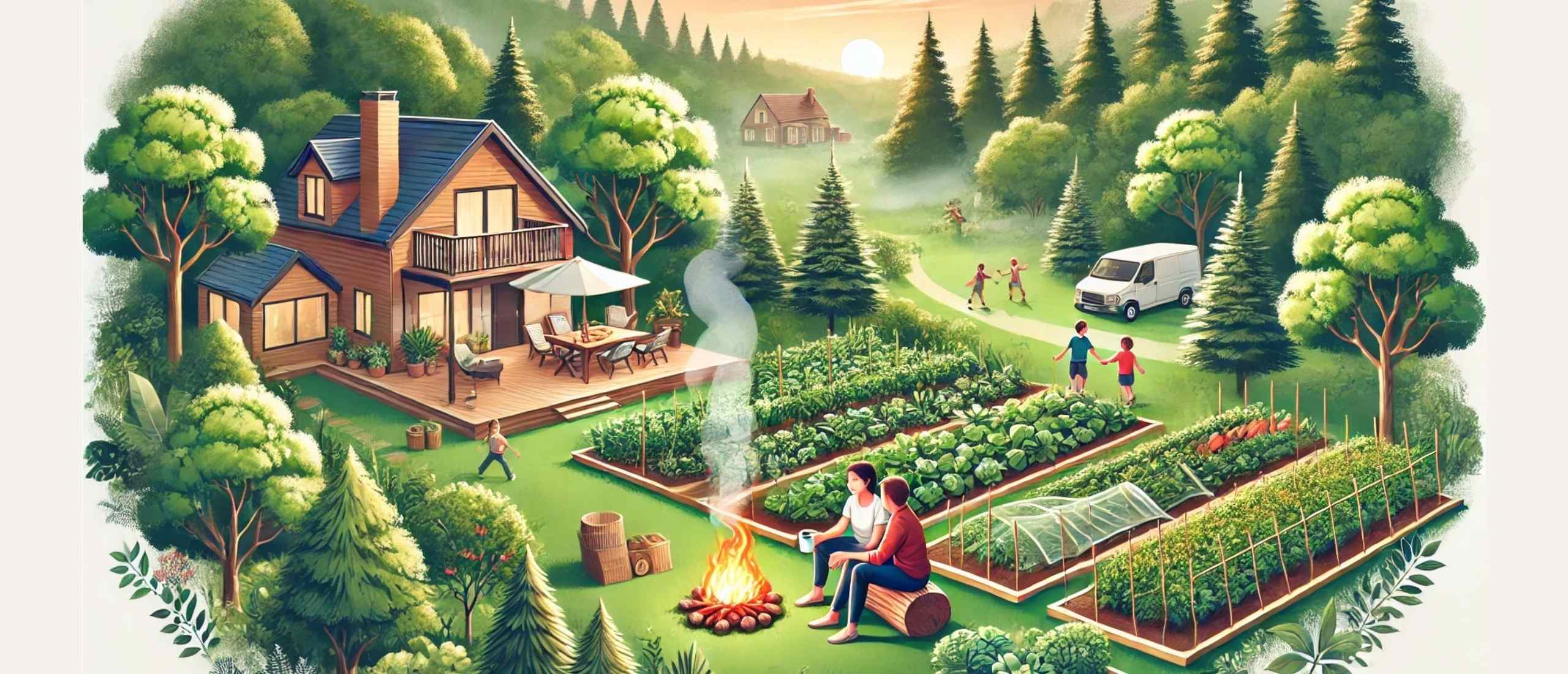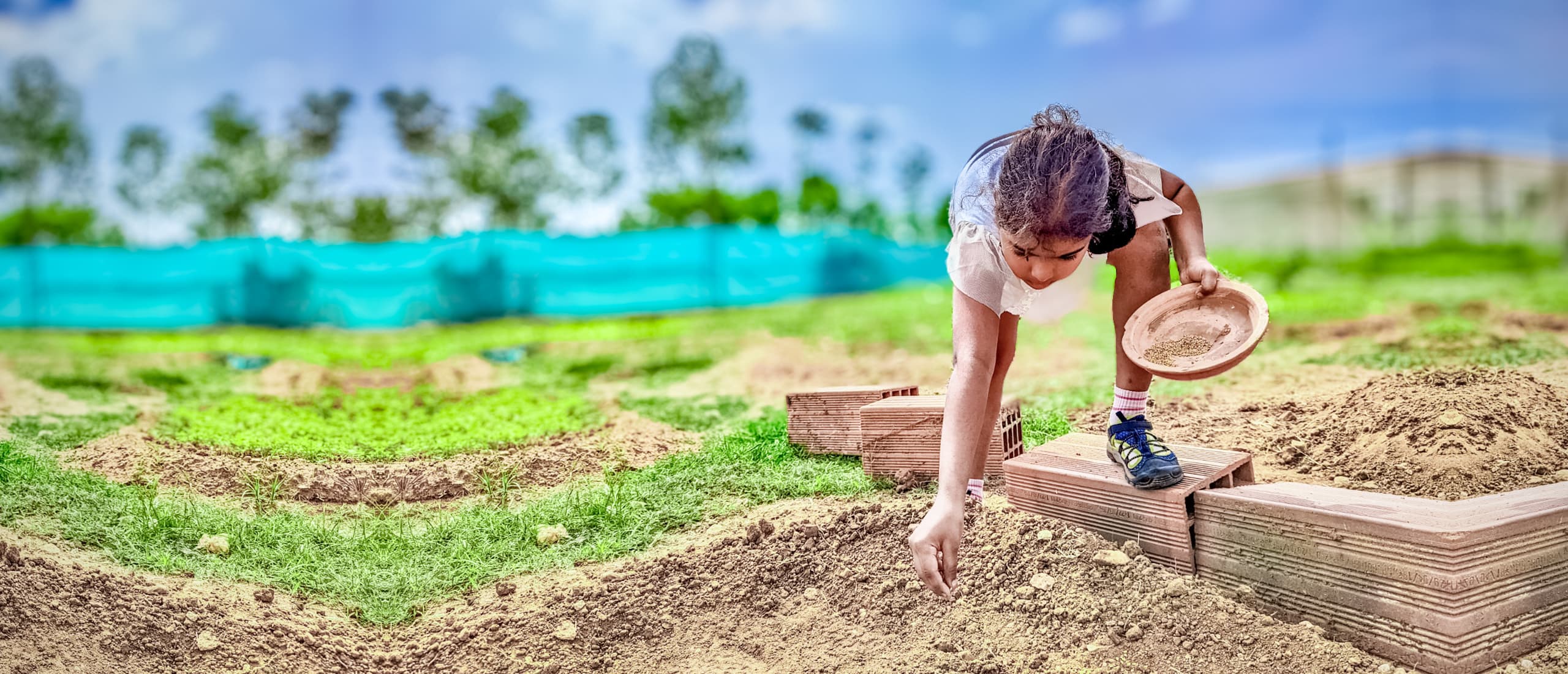February 12, 2021
Author: Ruchi Renavikar | Nihal Anand
Drylands typically face severe water scarcity and commonly have scanty and dry vegetation. They cover 41% of the earth’s land surface and house an estimated 2 billion people (FAO, 2019). While drylands are adaptable to climatic variability and water stress, they are also vulnerable to degradation by anthropogenic activities such as deforestation, urbanization, and unsustainable agricultural practices (tilling, intensive farming, fertilizer & pesticide abuse, etc). These practices disrupt the nutrient cycles, increase soil salinity, and destroy important soil microfauna (bacteria).
Agroforestry on the other hand, is a sustainable land management system, where trees are integrated with crops on the same plot of land. The trees planted reduce surface water runoff and soil erosion while facilitating an increase in biodiversity, surface and groundwater levels, and soil fertility. Our agroforestry model is further supported by a ‘Systems thinking’ approach, where we account for all ecosystems (soil, water, air) over several years when managing farmland. We have transformed once drylands into biodiverse forested green havens through our regenerative agricultural practices.
One of the key reasons behind Hosachiguru success is the integration of technology with traditional farming practices. There are sensors installed all across farms, which give real time data about soil moisture, soil temperature, rainfall, leaf wetness etc. This data helps determine the corrective and regenerative processes that must take place on the farm. For example, soil moisture sensors allow our AI systems to give our ground team regular irrigation advisory. All farms are secured with fencing and 24 hr security & CCTV cameras. Hosachiguru farms have harvested data and infrastructure to maximize the potential of farmlands by taking informed decisions.
Transformation Story 1
Eco-habitat
This 20 acres project aims at promoting community supported agriculture managed by the Hosachiguru agronomy team. Acquired in 2017, Hosachiguru has been successfully managing this Teak & Sandalwood plantation complemented with scattered fruit trees. Ecological re-design, rainwater harvesting and the creation of forests were the main principles at this site. The site prior to acquisition was barren with a very alkaline soil pH, unfit for any type of cultivation. Several organic soil corrective measures such as addition of organic carbon (through mulching), farm yard manure (FYM), green manuring etc, were employed to improve the nutrient content, stabilise the pH and increase water retention capacity. Today we have a total of 4000 trees managed at this project with more to come.
In addition to this, we have a cattle shed, composting unit, vegetable garden and a farmstay retreat for customers to experience a life surrounded by nature. The transformation at Eco-habitat has been phenomenal and can be witnessed by scheduling a site visit as well.
Before (2017)
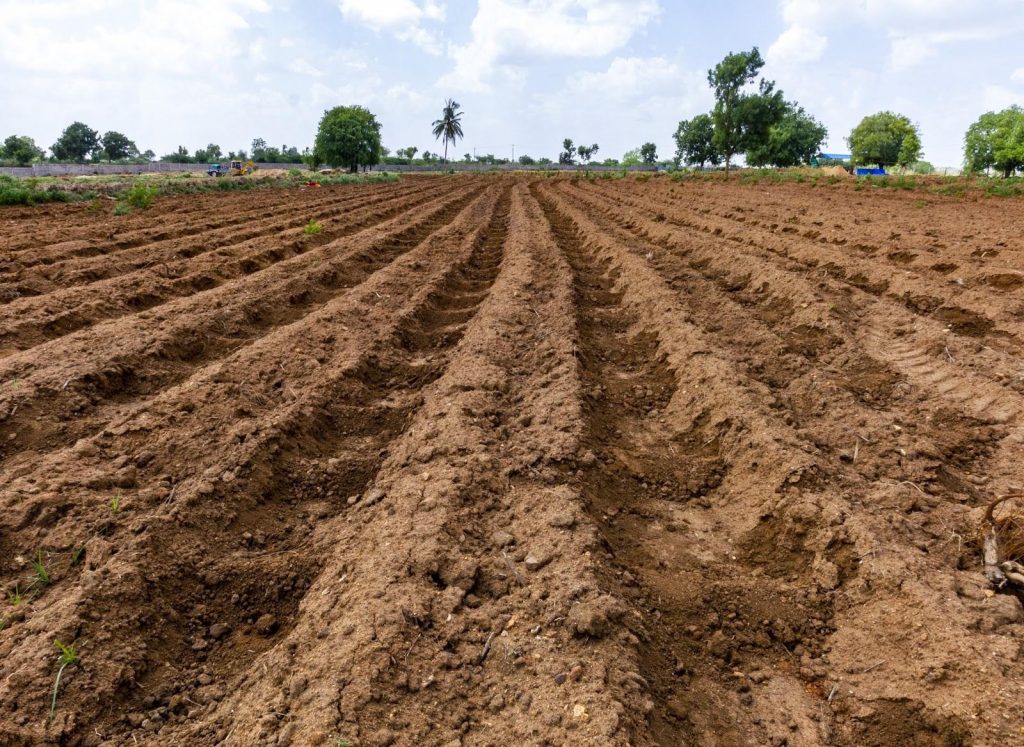
Present (2021)
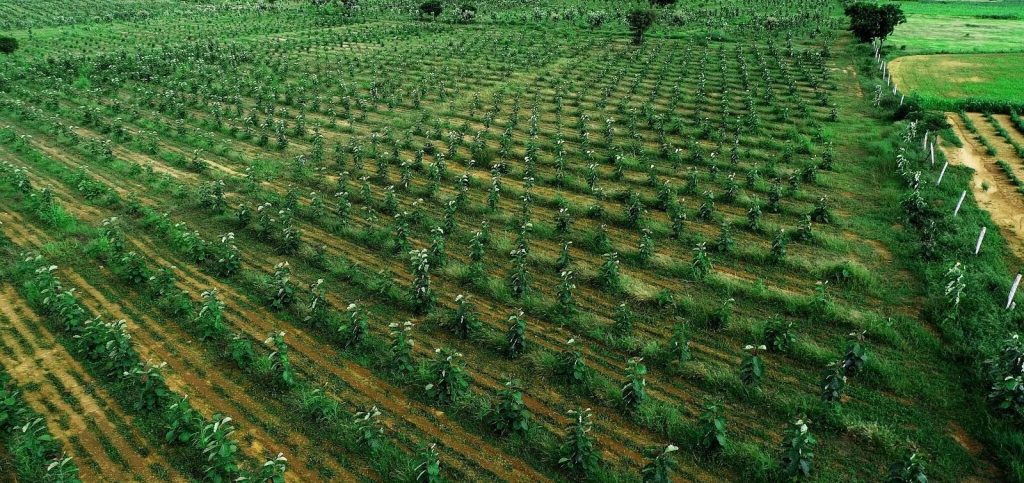
Transformation story 2
EOS
Started in 2014, EOS has a variety of timber and fruit trees which include Teak, Sandalwood, Mahogany, Mango and Pomegranate. This 45 acre project has a total of 14,000 trees managed by Hosachiguru. The lush green timber & food forests were once a dryland that was devoid of any green cover. The soil was a distribution of uneven gravel, sand and red-soil. Today, it has been transformed into a uniform soil system with highly fertile soil.
Prior to acquisition, this land was also exposed to intensive agriculture, where land was exploited with over-use to chemical fertilizers and pesticides. Residues of which could still be observed back in 2014. We have come a long way in reviving the natural ecosystems at EOS and also evolved in design thinking, when planning and managing farmland.
Specific corrective practices were undertaken at EOS over a 6 year period, which included:
| Sl.n | Objective | Corrective Practice | Result |
| 1 | To increase soil organic carbon content | Mulching- Green mulching is the mixing of the top soil with abundant carbon rich organic matter. Mulching Materials: dry grass clippings, coconut coir, weeds.Chop and drop method- where weeds in the rows of the plantation are cut and left on the soil surface to increase organic matter (Carbon) |
By adding organic matter soil Nitrogen and Carbon increases
Grass clippings break down easily, add nitrogen and carbon to the soil, and increase the soil’s porosity. The coir is a renewable resource, can absorb water and drain easily, and can help the soil retain nutrients. |
| 2 | To increase soil fertility | Application of naturally composted materials such as, Farm Yard Manure, nitrogen rich mulch, composted farm waste, vermi-compost etc. | Improves soil fertility and promotes essential soil bacterial growth |
| 3
4 |
To increase water holding capacity (WHC) of the soil
To harvest freshwater |
Trenching, Micro-bunding, Patta-bunding and hydrogel application to hold more water around the growing plants.
Rainwater Harvesting (RWH) tank with a storage capacity of 45L. This RWH tank gets filled twice a year during the monsoon. |
We have seen a drastic increase in the surface and ground-water since these practices were implemented. Due to the natural water harvesting methods, EOS has witnessed increased water table levels since 2014 despite water being utilised to grow 14,000 trees. |
Before (2014)
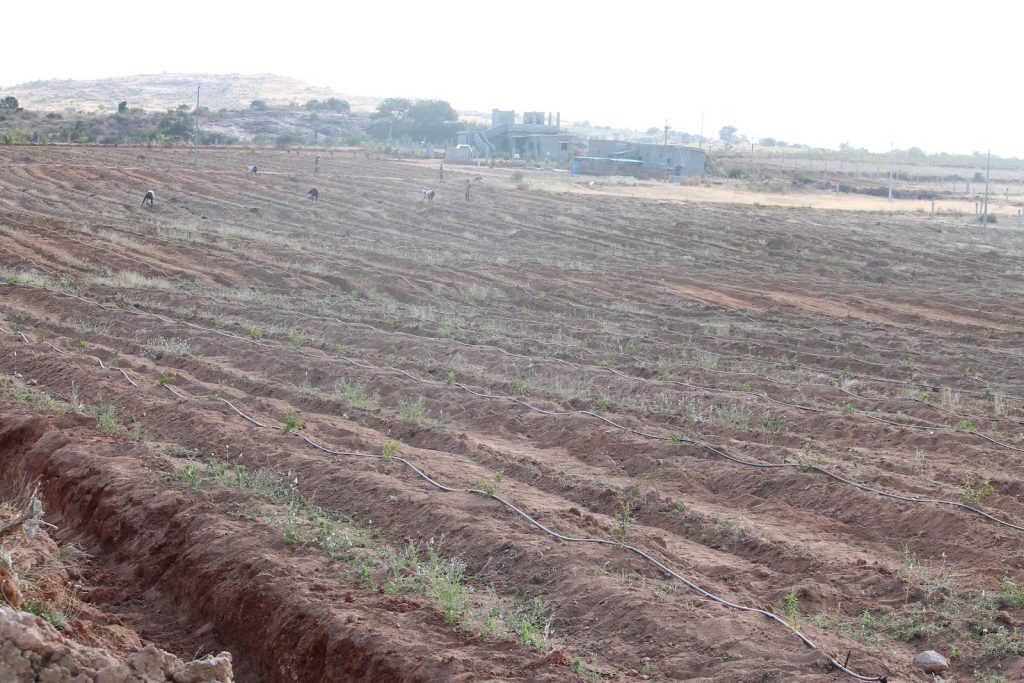
Present (2021)
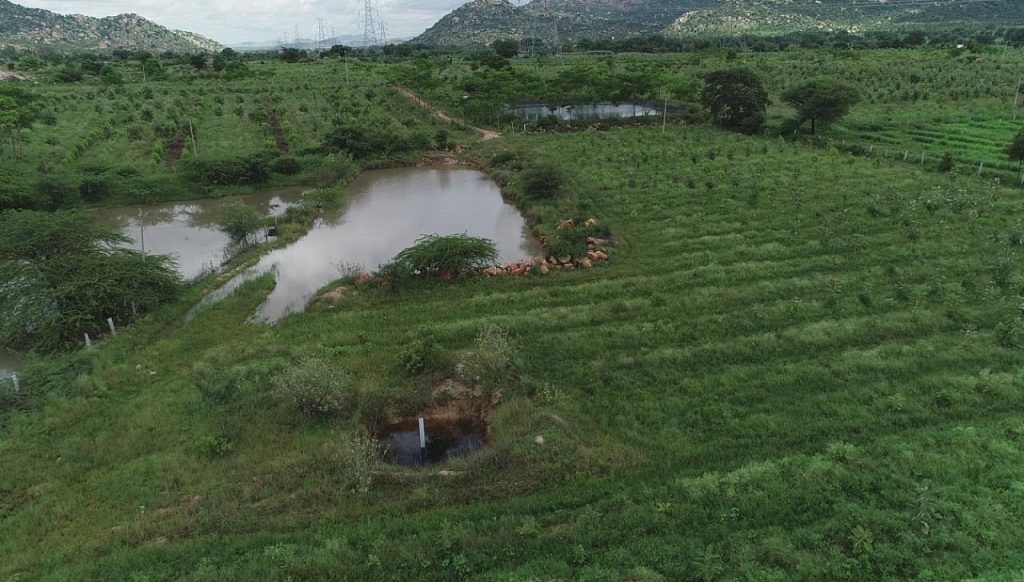
Really transforming landscapes can often be an arduous task. Despite widespread awareness of the nature and extent of multiple impacts of repeated land-use changes, there remains limited understanding of how these impacts affect trade-offs among ecosystem services and their beneficiaries across spatial scales.
Transforming landscapes takes years and happens in phases. One of the best ways to secure the land from degradation is afforestation, the impacts of which can directly be witnessed by increasing ground water levels, soil humus, soil water holding capacity, and nutrients. Often we forget that aspects of the environment are interdependent and have either a positive or negative feedback onto each other. However the direction of the feedback loop is one that can easily be controlled by operators.



